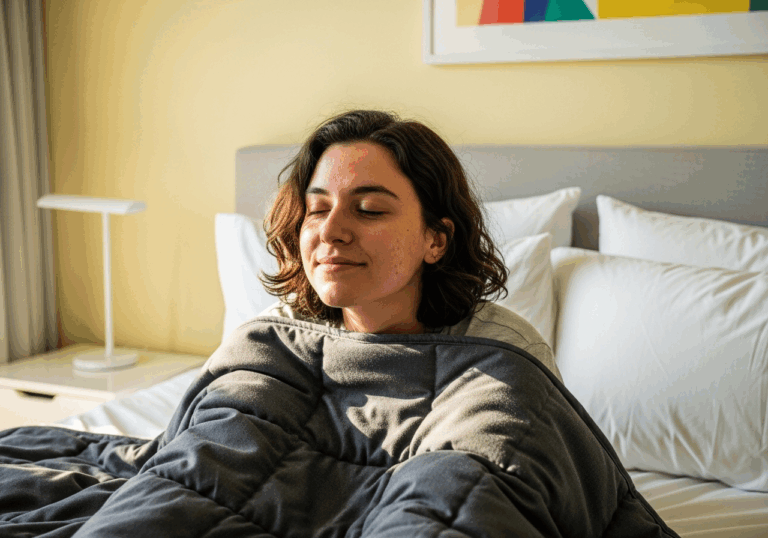Science-Backed Tips
Harnessing Textures for Sensory Calm
Deep pressure from textured surfaces reduces anxiety by 30%.
📊 Did you know?
💡 Why It Matters
1️⃣
Deep pressure from textured surfaces can significantly improve mood regulation in neurodivergent individuals.
2️⃣
Utilizing textured materials in therapeutic settings can enhance sensory well-being and reduce anxiety symptoms.
3️⃣
Incorporating tactile experiences into daily routines may lead to improved overall quality of life.
✅ Try These Micro-Tips
🎯
Engage with squishy or resistive textures for at least 15 minutes daily.
🎯
Incorporate textured materials into calming spaces, such as therapy rooms or personal areas.
🎯
Experiment with different textures to identify personal preferences for sensory regulation.
🎯
Use textured fidget tools during stressful situations to promote calmness.
📚 The study
The objective was clear: to explore how different texture types influence mood and well-being, particularly for neurodivergent individuals.
The findings revealed that squishy and resistive textures provide a unique form of deep pressure that can significantly soothe and calm those who experience sensory overload.
This is crucial because it highlights the importance of tactile depth in regulating emotions and enhancing sensory well-being.
By incorporating textured materials into therapeutic settings, we can create environments that not only reduce anxiety symptoms but also promote overall quality of life.
Furthermore, integrating tactile experiences into daily routines can lead to improved mood regulation, making it a vital consideration for caregivers and therapists alike.
As we continue to understand the science behind touch, it becomes increasingly evident that the right textures can serve as powerful tools for emotional anchoring and sensory relief, paving the way for better mental health outcomes for neurodivergent individuals.
❓ Frequently Asked Questions ❓
Learn more
What are textured surfaces and how do they help?
Textured surfaces, such as squishy or resistive materials, provide deep pressure tactile input. This input calms sensory-overactive individuals and helps regulate their mood through tactile stimulation.
How do textured surfaces affect neurodivergent individuals?
Research indicates that deep pressure from textured surfaces can significantly improve mood regulation in neurodivergent individuals. These textures help soothe anxiety and enhance sensory well-being.
What types of textures are most beneficial for sensory regulation?
Squishy and resistive textures are particularly effective for providing deep pressure that calms individuals. Experimenting with different textures can help identify personal preferences for sensory regulation.
How long should one engage with textured materials for optimal benefits?
Engaging with squishy or resistive textures for at least 15 minutes daily can promote calmness and improve mood. Consistent use can lead to enhanced overall quality of life.
Where can textured materials be incorporated for therapeutic use?
Textured materials can be incorporated into calming spaces such as therapy rooms or personal areas. This creates an environment conducive to sensory regulation and relaxation.
Can textured fidget tools help during stressful situations?
Yes, using textured fidget tools during stressful situations can promote calmness and reduce anxiety levels. These tools provide immediate tactile input that can help anchor mood.
What is the science behind tactile stimulation?
Tactile stimulation science explores how different textures affect sensory processing and emotional regulation. It highlights the importance of deep pressure in calming sensory-overactive individuals.
How does deep pressure from textures impact anxiety levels?
Deep pressure from textured surfaces has been shown to significantly reduce anxiety levels in neurodivergent individuals. This calming effect is attributed to the soothing nature of tactile input.
Why is it important to incorporate tactile experiences into daily routines?
Incorporating tactile experiences into daily routines can lead to improved overall quality of life. Regular engagement with textured materials helps maintain sensory regulation and emotional balance.
What should I do if I want to explore different textures?
You can start by experimenting with a variety of textured materials to find what feels best for you. Consider visiting sensory-friendly stores or online shops that specialize in tactile products.





